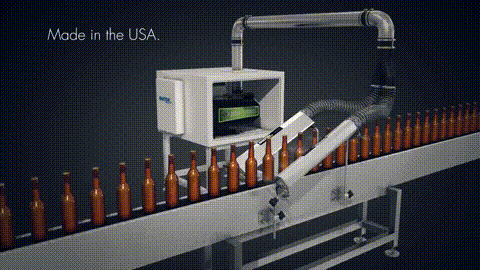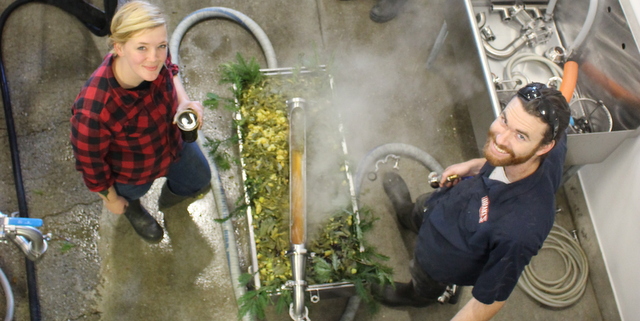A Cincinnati native, I’m always amped to promote Cin City breweries and suppliers. For instance, I was super excited to see Braxton Brewing Co. (in Covington, Ky., which is greater Cincinnati) collaborating with my favorite local pizzeria LaRosa’s for LaRosa’s Lager, a specialty lager that pairs perfectly with LaRosa’s classic family recipe sauce. I’m excited to try it with an extra large Buddy’s Topper pie.
While we’re on the subject of southern Ohio, Cincinnati-based Paxton Products just released an excellent overview video explaining its wide variety of awesome sounding airflow equipment. Wait, what does airflow equipment have to do with making beer? When it comes to craft brewing, it’s Paxton’s ionized air rinsing and drying equipment that’s become critical for packaging during the pandemic.
These ionized air rinsers and drying equipment create negative ions that attach to positively charged particles on cans and bottles (like dust or pollen) to help clean them. Paxton’s Ionized Air Rinsing Systems remove particulates, dust and contaminants using powerful ionization coupled with Paxton’s centrifugal blowers and air delivery systems. Its Ionizing Bottle Rinser eliminates the need for water rinsing and/or air rinsing using compressed air. Same thing: Paxton’s Ionizing Can Rinser improves sustainability in canning operations by eliminating the need for water rinsing and/or air rinsing using compressed air.
As an example, here’s a cool case study. Wisconsin’s Octopi Brewing built a new can line in their Wisconsin facility that moves cans on a single file plastic flat conveyor belt at 330 cans per minute. After filling and sealing, the cans go through washdown process, using water to remove residual beer from outside of the can. Octopi had concerns about the drying process. The seam area of the can needs to be completely dry, but the seam is a difficult place to dry because it is very easy for liquid to get trapped due to the different surface levels of the can and can lid. If there is any remaining liquid left on the can, it will cause the can and seam to oxidize. Another concern for Octopi is removing all liquid from the sides of the can. Once the cans are rinsed, the outside of the cans will be wet with a mixture of water and residual beer. To prevent the cans from being sticky, they need to be completely dry before packaging.
Octopi contacted Paxton Products looking for a solution not only to dry the can and the seam but also remove all remaining water and residual beer before the cans are put into cartons. The Paxton team determined that the contract packager’s wet can problem could be eliminated using the patent-pending CanDryer powered by a 10-hp PX-1000 ultra-high efficiency centrifugal blower. Paxton’s CanDryer incorporates two air knife slots and six nozzles into a single manifold.

Wait, air knives?
Sounds cool right. Watch the video above to see how this Paxton tech is explained. While air knives have been used for many, many years to blow off and dry a wide range of materials, including bottles and cans for beer, recent innovation has focused on going beyond the air knife to achieve more targeted, more efficient drying and blow off. Watch the video below to learn more about why Paxton air knife designs are more efficient than older designs, when to choose a nozzle, inline or spyder manifold instead of an air knife, and when application-specific designs such as a cap dryer or can dryer should be specified rather than an air knife system.





Leave a Reply
You must be logged in to post a comment.